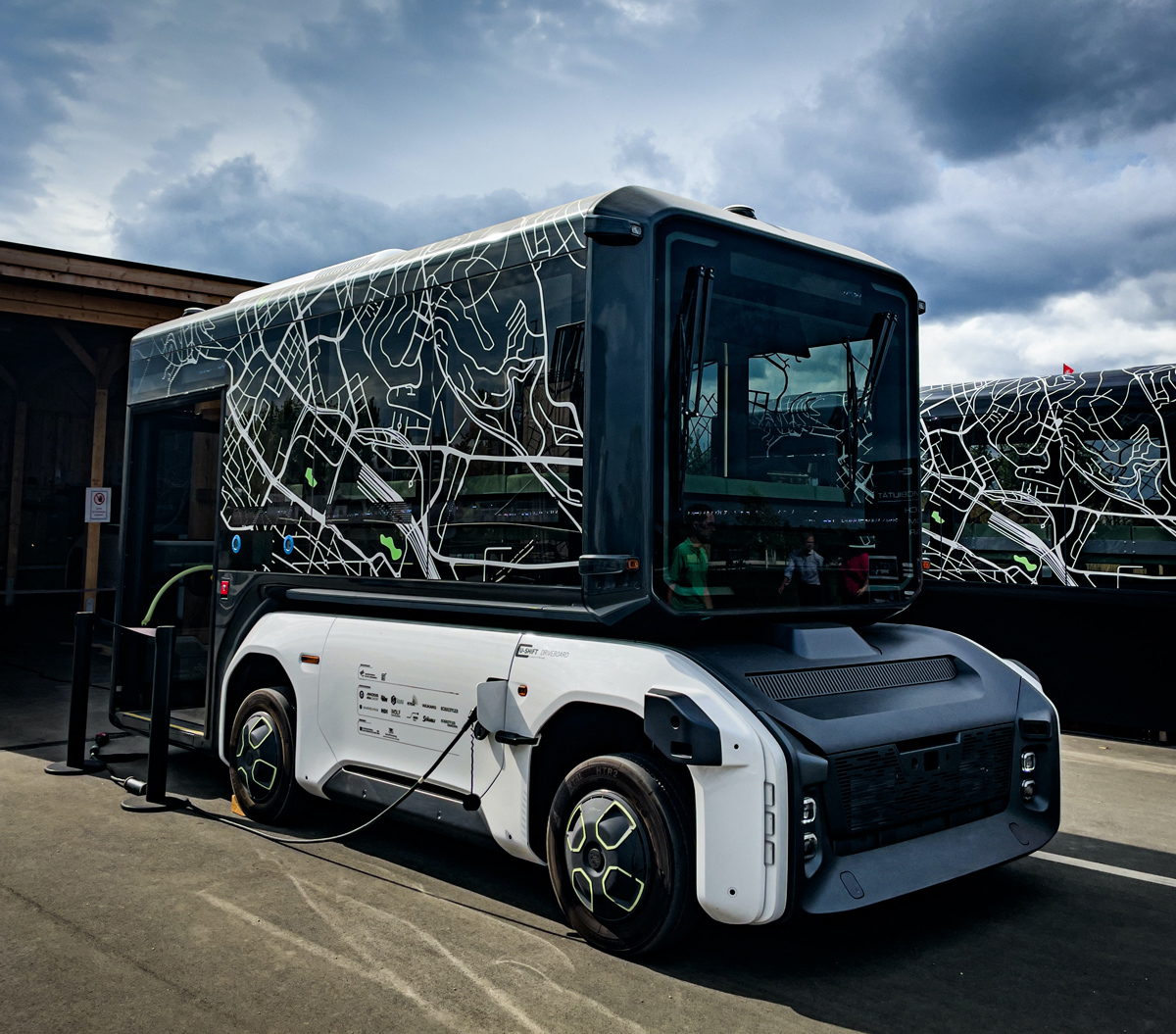
Electric mobility is a revolution in the world of transportation. With growing concern about climate change and the need to reduce greenhouse gas emissions, more and more people are turning to electric vehicles as a sustainable alternative to traditional internal combustion cars. In this article, we will explore what electric mobility is and its importance in the urban environment. We will also examine the benefits of electric mobility, with a special focus on direct current (DC) fast charging and the key role played by fast chargers in this trend. Finally, we will explore the fast charging solutions available today and how the future of electric mobility is shaping up with the expansion of fast charging points and electric vehicle chargers.
What is electric mobility?
Electric mobility refers to the use of vehicles powered by electric motors instead of internal combustion engines. These vehicles use rechargeable batteries to store the energy necessary for their operation. As battery technology has advanced in recent years, electric vehicles have become more efficient, with longer range and shorter charging times. Electric mobility includes not only automobiles, but also bicycles, motorcycles and electric buses, among other means of transportation.
 The importance of urban electric mobility
The importance of urban electric mobility
Urban electric mobility is especially relevant due to the environmental and congestion challenges facing cities. Internal combustion vehicles are a major source of urban air pollution and contribute significantly to greenhouse gas emissions. Changing to electric vehicles, cities can drastically reduce their carbon footprint and improve air quality for their residents. Electric vehicles are also quieter and produce less vibration, which contributes to a healthier and quieter urban environment.
The rise and trend of electric mobility
The exponential growth of electric mobility has had a significant impact on the business sector and on companies adopting electric vehicles. As more people join this trend, companies have recognized the need to adapt and take advantage of the opportunities offered by electric mobility. Declining electric vehicle prices and advances in charging infrastructure have made it more affordable and convenient for companies to transition to electric vehicles in their fleets.
In addition, governments and companies are investing in charging network expansion and incentives to encourage the adoption of electric vehicles. This investment has created a favorable environment for companies seeking to reduce their carbon footprint and improve their sustainability image. The adoption of electric vehicles not only has environmental benefits, but also economic benefits, as electric vehicles require less maintenance compared to internal combustion vehicles.
Benefits of electric mobility
On the business side, electric mobility also has a number of benefits. First, electric vehicles are more economical to operate and maintain compared to internal combustion vehicles. This is because electric vehicles have fewer moving parts and require less maintenance, which translates into lower repair costs and less downtime. In addition, the use of electric vehicles can help improve a company’s image by demonstrating a commitment to sustainability and care for the environment. This can be an important factor for consumers and can also help attract and retain talent in the company.
In public transport, electric mobility has significant benefits. Electric buses and trains do not emit exhaust fumes, which improves air quality in urban areas and reduces people’s exposure to pollution. This is especially important in cities, where traffic congestion and pollution are common problems. In addition, electric vehicles in public transport are quieter, reducing noise pollution and improving the travel experience for passengers. They can also be more energy efficient, which reduces operating costs for public transport companies.
Direct current (DC) fast charging
The installation of DC fast charging solutions in companies and businesses is an excellent strategy to encourage the adoption of electric vehicles and attract customers committed to the environment. By providing fast charging points at their facilities, companies can provide convenience to their customers and employees who own electric vehicles, allowing them to charge their vehicles quickly and efficiently as they go about their daily activities. This not only gives them a competitive advantage, but also contributes to the reduction of carbon emissions and promotes more sustainable mobility.
The role of fast chargers in electric mobility
Fast chargers play a key role in electric mobility by providing a convenient and accessible charging infrastructure. These chargers are designed to deliver power at high speeds, enabling fast charging of electric vehicles. In addition, the fast chargers are compatible with a wide range of electric vehicles and offer different power levels to suit the charging needs of each vehicle. This makes them versatile and capable of meeting the load demands of a large number of drivers.
Exploring DC fast charging solutions
Currently, there are different fast charging solutions available for electric vehicle drivers. These solutions include fast chargers at service stations, hotels and restaurants, shopping malls, parking lots and other public places. There are also fast charging networks on roads and highways that allow drivers to charge their vehicles during their journeys.
Acquiring one or more fast charging points can greatly help your facility for several reasons. First, it drives footfall, as more and more people are adopting electric vehicles and need places to charge their vehicles quickly. By offering fast charging points, you will attract these drivers and increase traffic to your facility.
At the same time, the installation of fast charging points improves customer loyalty. Electric vehicle drivers appreciate the convenience of being able to charge their vehicles quickly and efficiently while doing other activities, such as shopping or eating at a restaurant. By providing them with this service, you will be providing additional value to your customers and strengthening their loyalty to your business.
Another important benefit of installing fast charging points is to obtain data for strategic decisions. Fast charge points can collect information on usage and demand for charging, giving you valuable insight into your customers’ needs and market trends. This information will allow you to make informed decisions about the expansion of charging infrastructure and the development of new services related to electric mobility.
The future: Electric vehicle chargers and DC fast charge points
Electric mobility is experiencing significant growth and is changing the way we get around. More and more companies and businesses are joining the installation of charging points for electric vehicles in Spain, which is driving the expansion of the charger infrastructure throughout the country. DC fast charging and fast chargers are key elements in this trend, as they enable convenient and fast charging of electric vehicles.
As the freight infrastructure is upgraded and expanded charging infrastructurethe future of electric mobility looks promising, with increased availability of DC fast charging points and mass adoption of electric vehicles. It is time to embrace the future of electric mobility and contribute to a more sustainable world.
Floox chargers are an excellent option for companies wishing to offer electric vehicle charging services. With a variety of models available, these chargers are designed to meet the specific needs of each business.
Lyra 60
The Lyra 60, with a charging capacity of 60kW and two CCS2 connectors, is the most compact charger on the market. Ideal for businesses that require fast rotating charging, such as restaurants, gyms, dealerships, transport fleets and PoR operators.
SuperFloox
The SuperFloox model, on the other hand, has a charging capacity of 60 kW and can charge up to three cars simultaneously, with two high-capacity DC connectors and an optional third AC connector up to 22 kW. It is a suitable option for medium-sized service stations, transport fleets or concessionaires and PoR operators.
UltraFloox
The UltraFloox is the most advanced model and allows the simultaneous charging of two vehicles, adapting to power ratings of 90, 120, 150 or 180 kW direct current. This model is an excellent choice for service stations, dealers, transport fleets and PoR operators requiring ultra-fast charging, as vehicles can reach 80% of their full battery capacity in just 15 minutes.
Make sure you always have the power you need with FLOOX chargers!





